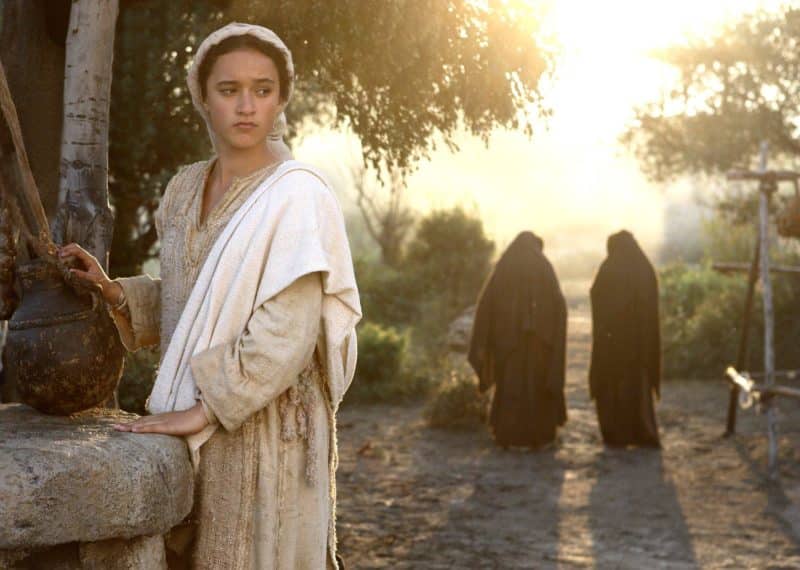Christianity has been so muddled up by Greco-Roman influences and moved far away from its Jewish roots that Mary has become a “semi-divine other”, according to a professor of historical theology.

Professor Thomas O’Loughlin.
Fr Thomas O’Loughlin of the University of Nottingham said one of the problems Christianity faced when it moved from the Jewish to the Greek world was that Jesus, and consequently Mary, became divine
beings far removed from earth.
Fr O’Loughlin and Br Kieran Fenn, FMS, were the main speakers at a Titipounamu: Study and Joy
online session entitled “Mary of Nazareth— Her Sacred Life and Her Human Life”, held on August
29 and moderated by Beate Matthies.
Br Kieran started with a preview of how Mary was written in the New Testament, starting with
the Letter of Paul to the Galatians.
“The centre of the Galatian statement of Christology is Jesus is human and Jewish. And of Mary,
what was said was just she was a woman and a mother. But it gives us our first point about sound
Mariology . . . that any truth about Mary is, first of all, a truth about her son and the features of his identity come through his mother,” he said.
In the Gospel of Mark, Br Kieran said, the seemingly embarrassing text for Mary is in chapter three when Jesus asks who his mother and brother are.
“What is Mark really doing? The family of Jesus is open to every human being. A family is not limited by blood, tribe, nation, colour, or culture. In this family, there is a place for everyone, there could be mother, brother, sister for Jesus,” he explained.
In the Gospel of Matthew, Br Kieran said, Mary is voiceless, “yet she, along with her extraordinary predecessors, becomes the place where the divine promises to Israel are fulfilled”.
“Luke gives us Jesus’ first disciple, Mary, who ponders over the words spoken to her about her son and adds on them. And in John, we get a full picture of her role in Cana and Calvary. But in no gospel is she a dominant figure, always she’s in her relationship with her son and is pointing towards him,” he said.
Mary as ‘other’
The Protoevangelium of James invented a “completely mythic history” for Mary which has deeply affected the Church.
Fr O’Loughlin explained that while in Judaism the world is a creation of God, in the Greek culture “earth is that which is furthest from God and heaven is that which is furthest from earth”.
In the Greek culture, the ordinary is “awful” and religion is filled with “wondrous divine beings who get on with their life parallel to us in outer space”.
As a divine being, Jesus cannot be touched by the “sheer muckiness and sheer reality of an ordinary human birth”.
“And of course, if you are going to have a miraculous birth, you then have to have a miraculous
mother,” explained Fr O’Loughlin.
He said this “mythic history” included a “miraculous conception” of Mary by her mother Anne who was said to have been past child-bearing age.
“[In the Protoevangelium] Mary, from the very moment of her conception, is separate from everybody else. She can’t be allowed with other children. She can’t be allowed to walk on ordinary earth. She had to live in the temple,” Fr O’Loughlin said.
But he explained, Mary couldn’t have lived in the temple because the “Holy of Holies could be entered once a year by the high priest”.
He said they invented this mythic history because “the sensibility of the culture is that Mary had to be completely ‘other’”.
“Religion encourages people to think in a muddled way. So, we don’t have mystery, we have mix-up.”
Dark side to memory of Mary
Fr O’Loughlin noted that there is a very deep sense within Christianity, from all our centuries in living in Greco-Roman culture, that does not like the reality of the Incarnation.
“We don’t like that God is with us,” he said. “[But] Jesus is a human being with a history like us. He is wholly human and, in faith, we see that he is the Logos among us, and so the Son of God.”
The Protoevangelium made Mary a semi-divine figure which was one of the reasons why there was a complete rejection of Mary at the time of the Reformation.
Mary became one of the great divisors among Western Christians, he said, with Catholics claiming the other group as “anti-Mary”.
Fr O’Loughlin said in creating a semi-divine Mary, we usually end up with a very false vision of Jesus and also a vision of religion where religion becomes “the other”.
“There’s a very dark side to our memory of Mary. There is the dark side of images of Mary that are actually anti-human, and anti-creation and anti-earthly and anti-groundedness.”
Fr O’Loughlin said there is a constant attempt by the magisterium to ground Marian devotions in solid sources, citing Pope Paul VI’s apostolic exhortation Marialis Cultus.
“Teachers are always untangling this confusion. It would be lovely to think that we have untangled all the confusion but the more you untangle the confusion there will always be someone else who will be creating more tangle and confusion,” he said.
“There will never not be a need for teachers and theologians.”

Reader Interactions